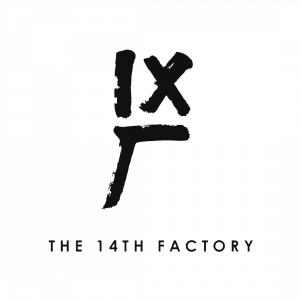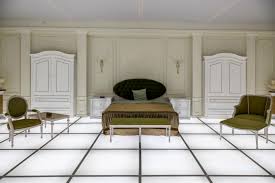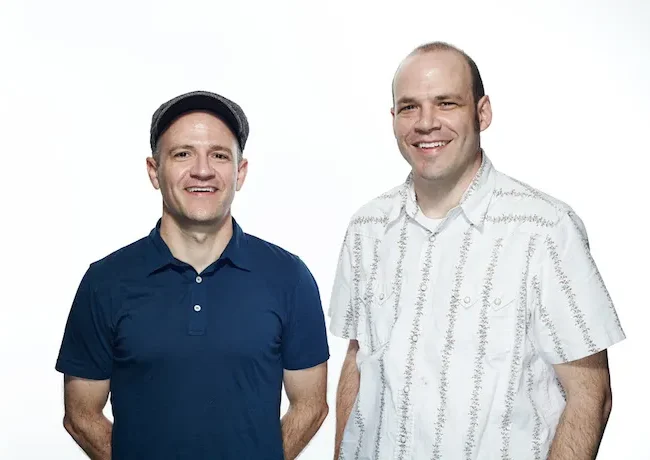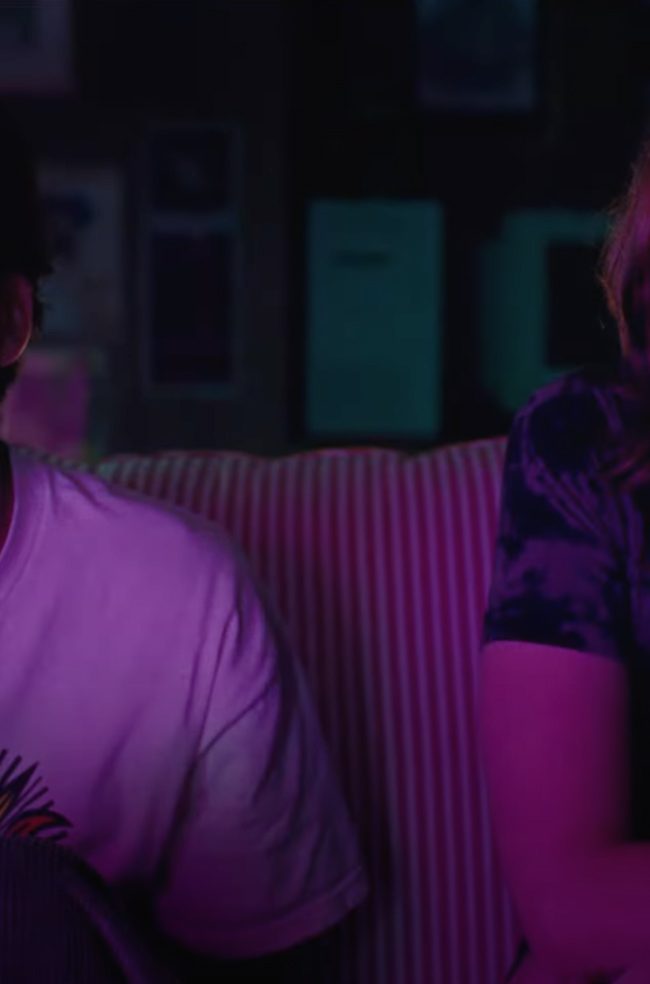 The first thing is, it’s in the middle of nowhere.
The first thing is, it’s in the middle of nowhere.
It takes me less than 20 minutes to drive from my apartment in Koreatown to the converted warehouse that houses The 14th Factory, but it’s in a part of Los Angeles I’ve never seen. Most of the vehicles within a half-mile of the address are massive industrial work trucks. I park two blocks from the address between a cargo van and an RV. I can’t recall any other time I’ve seen a non-movie-set RV in Los Angeles.
I decided to go on a Thursday. It’s early afternoon. My ideal conditions for the visit would be to somehow be the only person in the facility. I know this is impossible, but my hope is that choosing an off-peak time will limit the number of people I encounter. Judging from my preliminary research, I think the most appropriate way to experience this space is alone.
Sloppily painted arrows on the side of an otherwise unmarked building point toward the entrance. A security guard directs me up a long, gray ramp.
“Right this way,” he smiles.
Inside, white text on black walls describe the installation and list its collaborating artists. Sandwich boards disclaim that by entering I have agreed to participate in a documentary on The 14th Factory. I breeze past all this and sign the waiver that grants me access to the exhibit.

A group of visitors is gathering in front of the entrance. I’m unsure if this is they type of place that wants to gather us in groups or allows for individual exploring. Rather than waiting to discover if there’s an institutional preference, I slip ahead of the growing pack and enter alone.
Immediately plunged into darkness, I follow a patch of light ahead of me. A single painting is suspended from the ceiling: rosy white, somewhat pixelated torso clasping its head in some sort of discomfort. Moving forward, again into darkness, I notice that there is a distinctly Lynchian sound design being piped into the space.
The effect is very much like a haunted house.
A faint light leads me down another long, otherwise pitch-black hallway. My eyes still haven’t adjusted to the darkness so I focus on the dim, swirling light ahead of me. I have no idea how wide this corridor is, but it feels tight. Claustrophobic. Everything about the space encourages me to keep my eyes forward and my feet moving. At the end of the hall, the light reveals itself as the projected moving image of repeating human bodies in black-and-white, cycling endlessly like a living spirograph.
The next room continues developing the haunted house vibe. I enter into a massive sculptural installation: a black room with dim lighting housing an uninviting mound of black, angular wreckage. The Lynchian soundscape continues. Small running lights illuminate the floor around the sculpture and I follow them forward, unsure whether or not there is any other option. Each step is a mixture of anxiety and excitement, since a part of me expects a ghost to pop out or grab me from the darkness.
Around the first corner, I encounter another person for the first time since entering: a thin white man, smartly dressed and wearing sunglasses. He stands waiting in a glaring white doorway. I approach the door and he instructs me to wait. Other visitors begin to gather behind me.
A group of visitors leaves the white room and he beckons five of us forward. “The only rules,” he says, “are no shoes and don’t sit on the furniture.”
We take off our shoes. We enter.
The white room is an exact replica of the bedroom set from the end of Stanley Kubrick’s 2001: A Space Odyssey. I had read an article about this part of the exhibit, but expected it to be at the end. The whole experience was designed to create a sort of “hero’s quest” and I’d mistakenly assumed that Dr. David Bowman’s apotheosis would also be mine. Apparently there would be no Star Children born from this experience, just an endless stream of Instagram photos.

Back in the darkness, I feel emboldened by my time in the light. I step beyond the running lights to get a closer look at some dimly lit paintings lining the back walls of the room. Ghostly images of Asian girls in odd costumes. Some of them have their bodies painted. One has a teddy bear hat on her head.
I’m still not sure if I’m allowed to be back here. No one has said anything, but maybe they just didn’t notice.
As I step back toward the path, the paintings are lost again in the darkness.
The next room is wide open and feels more like a regular art installation. There are paintings and photographs hung along the walls (portraits of punk rockers, medieval Asian warriors flying in the air, etc.) and adjoining rooms branching off in all directions. The standout feature is in the center of this main room: a grassy field on which visitors are invited to walk, frolic, and Snapchat. Like the room from 2001, there are two rules: No shoes and no sitting on the swings. “You can swing the swings,” another worker encourages, “but you can’t swing on the swings.” The grass, presumably fresh a few weeks ago when the installation opened, is now brown and dying.
I opt to leave my shoes on this time.
Everything I look at is intriguing, but my inner cynic is can’t stay silent. I can’t shake the sense that this whole warehouse was designed primarily with an eye toward M.S.E. (Maximum Selfie Potential), even though The 14th Factory’s press materials spoke of much loftier goals. According to founder/artist Simon Birch: “My hope for the 14th Factory is to bring a broad range of minds together, to uplift and inspire, ignite conversation, action and solutions but also to provoke. There are installations here that discuss love, loss, fear, pain, hope…our shared experience, but that also ask the question; as civilizations have risen and fallen, are we now at the brink of collapse or the start of a wonderful new chapter?”
Sure, Simon.
And while we wait on this brave new world, we can all keep contributing to the culture of endless expansion by producing free content (selfies, snaps, tweets, etc.) for platforms owned by global tech companies, who will then sell ad space on these platforms to multinational corporations, who will then sell us products we don’t need that were made under conditions that we neither know nor understand–all while we type with our thumbs on machines that were built by Chinese slaves in factories installed with suicide nets.
I’ve read I Hate the Internet, Simon. I can’t drink your Kool-aid.
In the room before me, hundreds of pitchforks hang down from the ceiling. I’ve watched for eight straight minutes as dozens of visitors take photos beneath them, a dramatization of impending doom.
Maybe we are being transformed.
Working my way through the rest of the room, I end at an exit to the outside. The sculpture that greets me is evocative of the sort of utterly avoidable, distinctly human tragedy: a watery graveyard of airplane wreckage.
I examine the piece from all four sides. It is serene. The outside is quiet.
Once again, I am alone.
The only thing left is the gift shop, which I give a perfunctory lookover. I like some of the t-shirts, but everything is too expensive.
Is this it?
I see another sloppily painted arrow signaling the exit, but first I walk through one final exhibit: a long, paved lot lined with information about the contributing artists and the pieces that they created. I appreciate that this information was saved for the end. If my “hero’s quest” is finished, this is where we roll the credits.
But then, an unexpected coda.
Before I turn to leave, I notice a couple walking out of a door along the back end of the paved lot. They look older than the employees I’d seen working. I assume this door will have locked behind them, but it didn’t.
I walk through the door.

I am in a small space surrounded by black curtains on all sides. I hear ambient music to my left and peek behind the curtain.
Another exhibit: on a long screen is projected the moving image of swirling water. The water dissolves into swirling images of light, swirling images of particles. The ambient music telegraphs a sense of great importance to all these swirling colors.
I’m not alone in this room so I know this is really happening, but it’s all starting to remind me again of 2001. Am I passing through a wormhole? Is this my apotheosis?
I notice an arrow pointing in the opposite direction of how I’m moving through the room. Did I somehow miss an entire section of the installation that I’m now passing through backwards?
I reverse-follow the arrow into the next (preceding?) room and am surrounded by back-projected screens on all four sides. The image is of an endless rising up along the side of an impossibly high building.
Awakened by my the rewards of my prior explorations, I decide to continue moving into places where I’m not sure that I belong. I push beyond a curtain and move behind one of the screens. I watch the reverse-image and the light from the projectors as a group of young women enter the room unaware of my presence.
I wait a few minutes and then pass slowing in front of the projector. My shadow appears towering above them eliciting shouts of frightened surprise.
It turns out The 14th Factory is a haunted house.
I continue moving against the current of unsuspecting visitors, indulging my new status as a ghost. I see photos and sculptures of a demolished car and then a movie of that same car (resurrected, another ghost?) crashing to pieces across six conjoined screens. I see hundreds of sweaty men beating the living shit out of one another projected across more surfaces than I can count. I see rocks displayed regally next to a room with dozens of unique crowns fashioned from stone, wood, and metal.
With each new room I wait for someone to tell me that I’m moving in the wrong direction.
I remain unnoticed.
My haunt continues until I finally emerge, once again, in the room with the grassy field. I have no idea how I missed this wing my first time through. It wasn’t hidden. I walked right past it.
Unnoticed. A final ghost.
I wonder what other mysteries I could have missed, but decide to return to the realms of the living. The exit is straight ahead of me.
This time, though, I take off my shoes and walk across the dying grass.
– Nick Toti (@NickTotiis)











